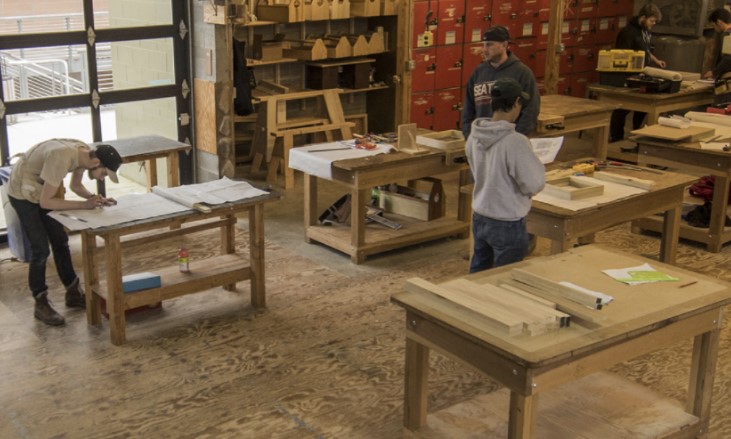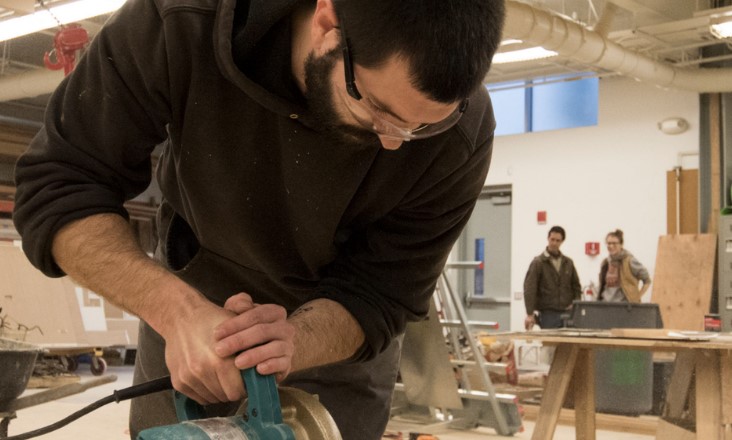The world has always been in a constant transformation, but changes have gained more speed in the last two years with technology bringing new realities and the pandemic altering the flow of life in unexpected ways. This global perspective affected several sectors of the economy and the educational area was not unscathed. Therefore, because of circumstances, we see a good project “closing its doors.” The Wood Technology Center has decided to terminate the Cabinetmaking and Architectural Woodworking (a 5-quarter program) which is in its last quarter.
According to Robert Watt, administrator of the Wood Technology Center, the retirement of the instructors and the high cost of the program were the main reasons for the decision. In addition, there is the difficulty of finding specialized labor to hire new instructors and the current shortage of raw materials that raises the cost of wood needed for the activity. Cabinetmaking and Architectural Woodworking had 35 years of trajectory and formed many students, but Watt was unable to highlight how many students have already been part of the project. On the possibility of the program returning he declared, “If the program comes back, it will be run through Continuing Education.”
Seattle Central College’s Wood Technology Center prepares students of all ages and backgrounds for rewarding living-wage careers in architectural millwork, fine furniture making, residential construction, boat building and repair. The student learns specialized skills, which are in high demand, and graduate ready to work in the industry.
Focusing on woodworking and architectural woodworking, lasting about 15 months, the program that is ending is designed to prepare students for employment in woodworking, furniture construction, and fine woodworking. The course curriculum combined technical instruction with shop experience and precision training. Woodworkers manufacture a variety of products, such as cabinets and furniture, using wood, veneers, and laminates.
“The program is amazing. All programs are great, but the cabinetry program teaches a very high level of precision. Not only does the program create flexible problem-solvers, but students also learn a variety of soft skills like communication and economic productivity. There is a wonderful community at the Wood Technology Center that all the programs contribute to,” said Cameron Musard, who completed the program in Feb. 2020. In 2019, after finishing the first quarter, he got a job at a large millwork company in Redmond. He is currently a facilities joiner and laboratory assistant in the educational carpentry at the University of Washington College of Built Environments (CBE), and he is deepening his knowledge in urban design and planning, and public policy.
The future of wood
The advancement of technology has created new professions with attractive salaries and many opportunities – which may have affected people’s interest in activities such as woodworking. But wood and technology don’t have to be on opposite sides. Both in construction and in the production of furniture and decorative items, both can and should complement each other. The new does not need to exclude the “old.” Wood has reinvented itself and is synonymous with sophistication and modernity.
Many designers, architecture, and engineering experts point out that it is the future. 3D bioprinted wood, for example, can produce eco-friendly futuristic furniture. Scientists are also already developing research to “grow” wood in a laboratory without sunlight or soil. In the real estate sector, wood stands out as skyscrapers capable of reducing CO2 generation. Architect Michael Green, who was called eight years ago for a global era of wood-framed skyscrapers at a TED conference, is one of the defenders of this idea.
According to the U.S. Bureau of Labor Statistics, the median annual wage for woodworkers was $33,750 in 2020. The carpentry job, which is a similar occupation, is projected to grow 2% from 2020 to 2030. Despite the slow growth, about 89,300 openings for carpenters are projected each year, on average, over the decade.
Most of those openings are expected to result from the need to replace workers who transfer to different occupations or exit the labor force, to retire. Both carpentry and woodworking transform raw material into something functional with creative and technical knowledge. However, woodworking requires a more delicate finishing of the product. Professionals need to pay attention to details.

Curiosity
Wood is one of the oldest building materials in history. There are many accounts of the first times it was used to create structural designs and objects. There is evidence that cites the emergence of woodworking 1.5 million years ago in Tanzania and studies that date back to ancient Egypt.
Author

Tássia is a Brazilian journalist who is learning and discovering English. She believes in the power of the mind and destiny. Sweets are her biggest addiction. Tássia is passionate about food, travel and writing about feelings and thoughts. Seniors have a big space in her heart and that's why she volunteers on a project focused on them. She loves changes and challenges, and that is what keeps her going.












Be First to Comment